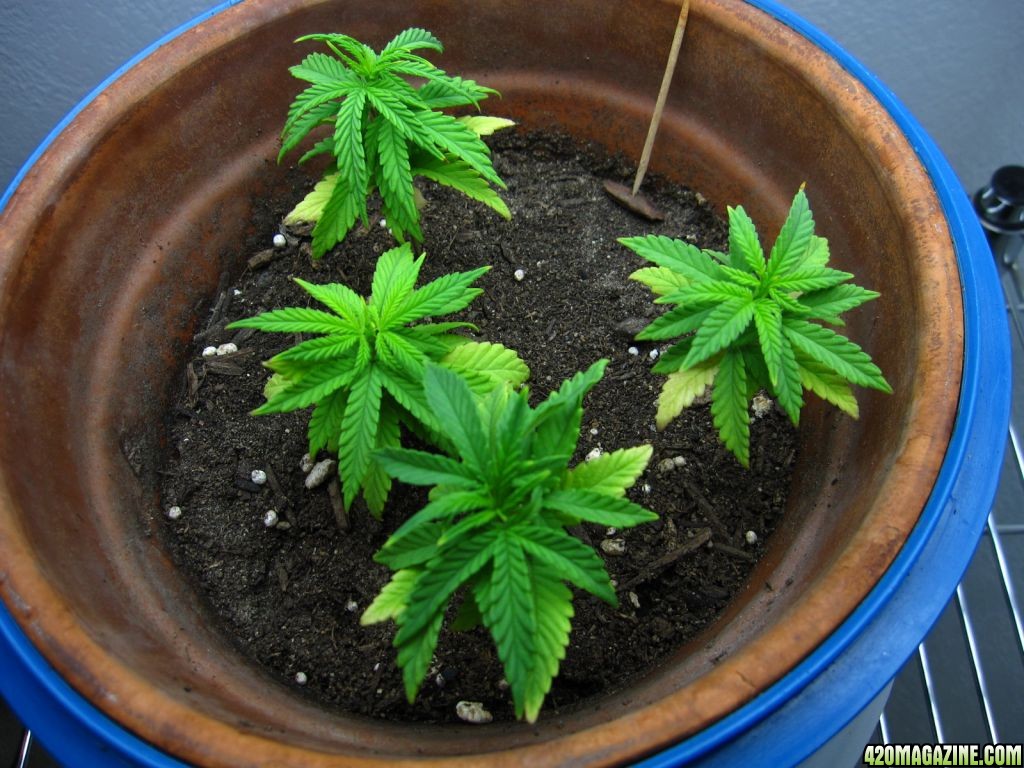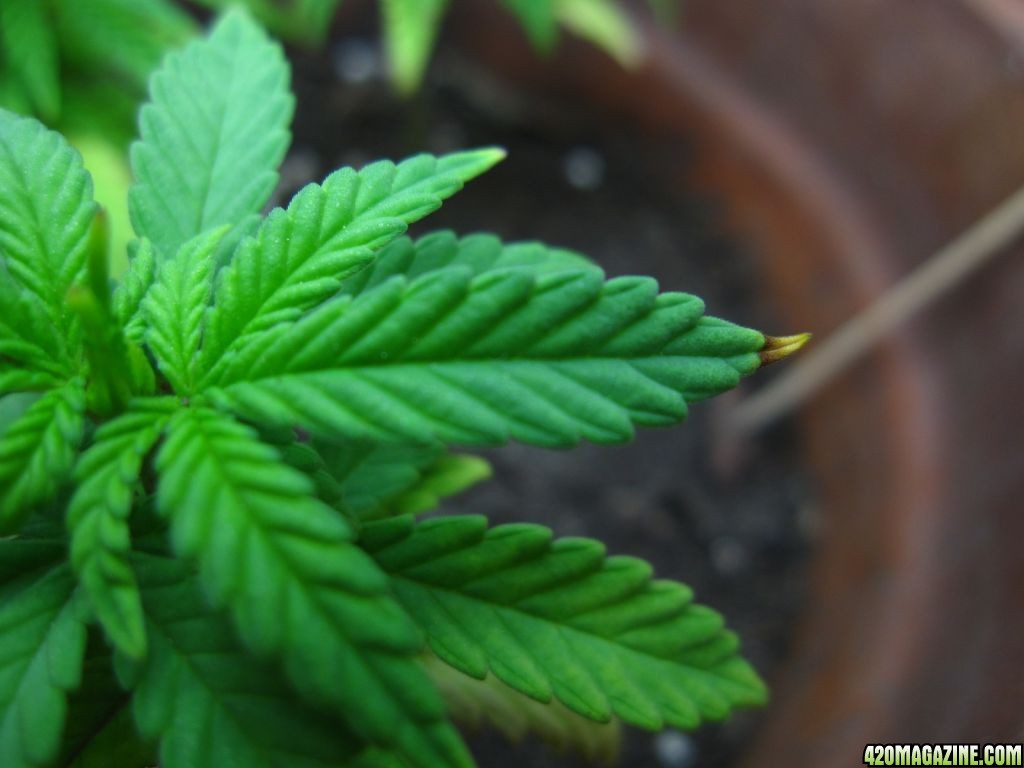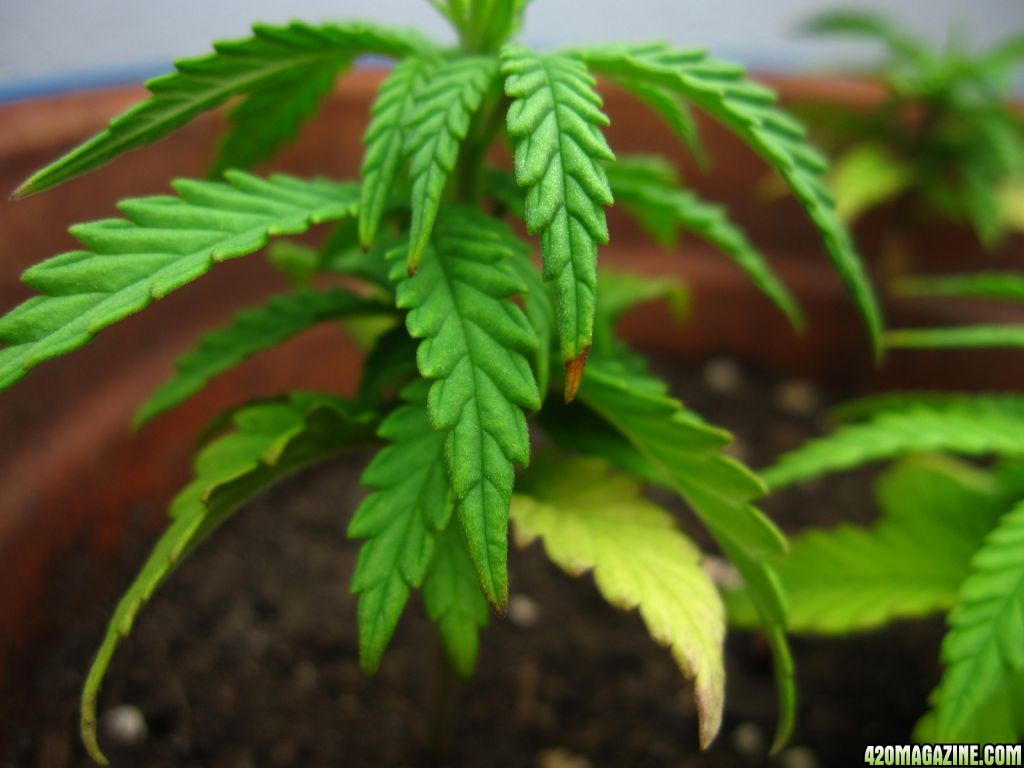These guys are about four weeks out of the ground, and seem to be growing well (all are between 2 and 3.5 inches tall and are on their 6th node). I have two concerns:
1) The first set of serrated leaves on each plant have turned to various shades of yellow.
2) The very tips of some of the leaves are dark brown. It only seems to be the point at the end of the leaf though.
I've tried to show these things in these pics:



No nutrients have been applied, and I have been irrigating with collected rainwater. The seedlings have been under small fluorescent bulbs since they sprouted.
I'd like to move the plants outside to a prepared bed and have been gradually acclimating them to the elements the past two days, but I don't want to drop them in the soil if they might be in a vulnerable condition. Anyone who has any thoughts can chime in.
1) The first set of serrated leaves on each plant have turned to various shades of yellow.
2) The very tips of some of the leaves are dark brown. It only seems to be the point at the end of the leaf though.
I've tried to show these things in these pics:
No nutrients have been applied, and I have been irrigating with collected rainwater. The seedlings have been under small fluorescent bulbs since they sprouted.
I'd like to move the plants outside to a prepared bed and have been gradually acclimating them to the elements the past two days, but I don't want to drop them in the soil if they might be in a vulnerable condition. Anyone who has any thoughts can chime in.



